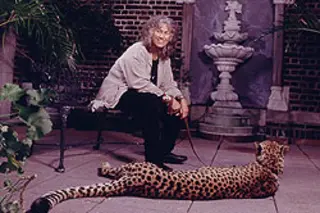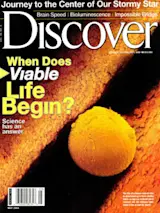Jane Goodall began to observe chimpanzees in the Gombe forests of Tanzania 45 years ago. Her observations redefined primate research and led to the remarkable conclusion that chimpanzees make and use tools. Since then, she has shown that they have complex minds and emotions, and they pass on culture to their young. Now nearing 70, Goodall spends as many as 300 days a year crusading for conservation, research, and education and seeking funding for her Jane Goodall Institute. Her documentary, State of the Great Apes, airs on June 12 on Animal Planet.
Why do you spend so little time in Gombe?
G: There came a point of suddenly realizing that chimps are going, the forests are going, chimps in captivity have been tortured. So I couldn’t be really happy in the forest because I would know that I wasn’t doing what I could be doing to save it. I’m not ...















